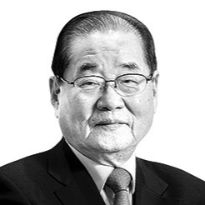[Column] Lessons from North Korea’s commando attack

Lee Jong-chan
The author, a former director of the National Intelligence Service, is a steering committee member for the JoongAng Ilbo’s Reset Korea Campaign.
A group of North Korean commandos, including Kim Shin-jo, infiltrated the area near the Blue House on Jan. 21, 1968. If the Jongno police chief hadn’t stopped them near Jahamun, they would have entered the presidential compound to kill President Park Chung Hee. Fifty-five years after the infiltration, I was shocked to see the recent news reports of the North Korean drone that got into the airspace over the presidential office in Yongsan. I wondered how much longer we have to suffer such risks.
It was 1968: the Vietnam War was ongoing, and international communism was waging a solidarity struggle. North Korean leader Kim Il Sung latched on to this and declared an armed confrontation against the South, threatening to use legal, illegal, violent and nonviolent means.
After being caught off guard against the ambush, the Park administration immediately issued a presidential order to establish a counterespionage team at the Joint Chiefs of Staff to supervise and control all intelligence and investigative agencies and the military. Around this time, the local reserve army system was launched. The Korea Central Intelligence Agency (KCIA) also started to train a special force to carry out retaliatory attacks against the North.
But there was a critical flaw. At that time, we had no power to launch a preemptive strike, and even faced limits in carrying out retaliatory attacks due to the U.S. wartime control over the Korean military. The U.S. was struggling with the Vietnam War and did not another war in Korea. Although the North captured the USS Pueblo two days after the attempted Blue House attack, the U.S. did not retaliate.
We were able to strengthen our defense forces, but we could not launch a retaliatory attack. In winter of that year, the North infiltrated a large number of guerrillas into the area around Samcheok and Uljin, but they were rounded up in a joint operation by local reserves and the regular army. As the South strengthened its defense capabilities, Kim Il Sung had to give up further infiltration attempts. When Lee Hu-rak, then director of the KCIA, visited North Korea in 1971, Kim apologized for the infiltration attempt. “It was an unauthorized act by extremists,” he explained. We learned for the first time that North Korea would bend when we responded strongly.
The North recently explored the possibility of drone attacks on the South. How must we respond to this new kind of provocation? Let’s learn lessons from the past.
First, we must establish an integrated military command system, as the past presidential order did, and set up a joint drone response team consisting of the civilian, government and military sectors. As drones are small and can fly at low altitudes, they are difficult to detect using existing methods. When we respond lukewarmly, the North will arm the drones and stage stronger provocations. The three sectors must work together to improve our ability to detect small-scale weapons and shoot them down precisely. It’s nonsense that our advanced IT and weapons development capabilities cannot disable the North’s drones.
Second, we must end our passive military posture of coming up with countermeasures only after the North attacked us. Why can’t the North transfer its nuclear and missile technologies to Middle Eastern countries? It refrains from such a move as it knows very well that Israel has fierce retaliatory capabilities to enact eye-for-an eye revenge. The Israeli intelligence agency Mossad closely monitors the North’s arms exports. The North may have been warned that it would face stern retaliation if necessary. Our military must consult with the U.S. military in advance to have the ability to strike the origin of a North Korean attack. We must improve our capability to retaliate against drone attacks, including decapitation operations of the kind Kim Jong-un fears.
Third, the North’s reckless missile provocations allowed Japan to rearm itself. The U.S. has already acknowledged Japan’s ability to strike the origin of an attack. Japan is developing into a war-capable country. China, not North Korea, is the most sensitive to Japan’s arms buildup. When Japan accelerates its arms buildup, it could disturb the military power balance in Northeast Asia.
As a result, we do not want Japan’s defense powers to grow stronger than necessary. But North Korea is provoking the Japanese to revise their Peace Constitution and transform the country into one capable of war. Such situations can offer a diplomatic opportunity for us to urge China to help control the North’s provocations. We must warn the North of the dire consequences it faces for provocations if we really want to prevent another crisis similar to the one in January 1968.
Translation by the Korea JoongAng Daily staff.










with the Korea JoongAng Daily
To write comments, please log in to one of the accounts.
Standards Board Policy (0/250자)